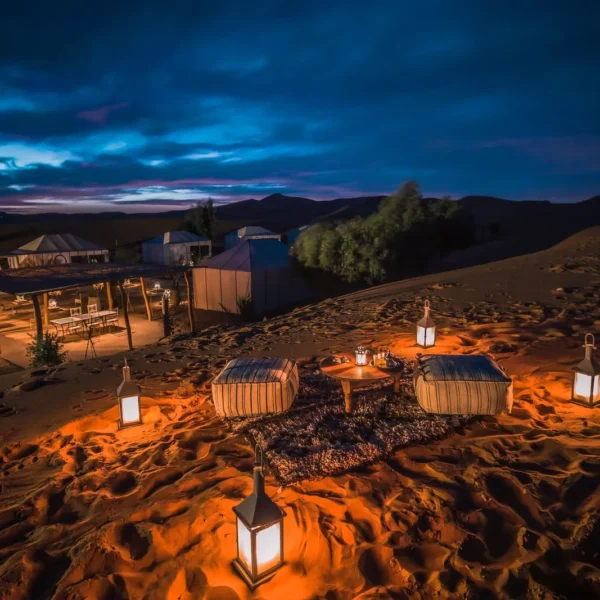Why Visit Morocco?
Explore Morocco and discover a land of rich history, breathtaking landscapes, and vibrant culture. From the bustling souks of Marrakesh to the ancient streets of Fes and the golden dunes of the Sahara, Morocco offers unforgettable experiences for every traveler. This guide will help you explore Morocco’s top destinations, hidden gems, and cultural highlights—perfect for planning the adventure of a lifetime. Whether you’re a first-time visitor or returning to uncover more, explore Morocco with confidence and curiosity.
Section 1: Marrakesh – The Heart of Morocco
Marrakesh is arguably Morocco’s most iconic city. You can explore its vibrant markets (souks), stunning palaces, and ancient medinas. Here are a few sub-sections to expand on:
-
The Medina of Marrakesh
-
Describe the UNESCO World Heritage-listed old town, with its maze-like alleys, historic sites, and souks selling everything from spices to textiles.
-
Mention landmarks like Jemaa el-Fnaa Square, Koutoubia Mosque, and Saadian Tombs.
-
-
Must-See Palaces and Gardens
-
Bahia Palace and El Badi Palace offer visitors insight into Morocco’s royal history.
-
Majorelle Garden, once owned by Yves Saint Laurent, is a serene escape from the hustle and bustle of the city.
-
-
Shopping and Souks
-
Highlight the experience of bargaining in the souks. Mention goods like leather, ceramics, jewelry, and textiles.
-
If you’re an art lover, recommend the Musee Yves Saint Laurent.
-
Section 2: Fes – A Journey Through Time
Fes is one of the most well-preserved medieval cities in the world and is renowned for its ancient architecture and intellectual history.
-
The Fes Medina (Fes el-Bali)
-
Dive into the history of the Fes medina, also a UNESCO World Heritage site, and explain how it’s one of the largest car-free urban areas in the world.
-
Recommend visiting Al-Qarawiyyin University, the oldest continuously operating degree-granting university in the world.
-
-
Tanneries and Craftsmanship
-
Explore Fes’ famous leather tanneries, such as the Chouara Tannery, where leather goods are made in the same way as they were centuries ago.
-
Discuss the artistry behind pottery, weaving, and metalworking in Fes.
-
-
Madrassas and Mosques
-
Talk about historical madrassas like Medersa Bou Inania and the beautiful Al-Attarine Madrassa.
-
Section 3: Beyond Marrakesh and Fes – Discover More of Morocco
While Marrakesh and Fes are the highlights, there’s so much more to explore in Morocco!
-
The Sahara Desert
-
A trip to Morocco isn’t complete without visiting the desert. Recommend taking a camel trek from Merzouga to Erg Chebbi dunes.
-
Suggest staying in a desert camp for a truly immersive experience.
-
-
Chefchaouen – The Blue City
-
Introduce readers to the magical city of Chefchaouen, known for its blue-painted streets and buildings.
-
This charming town offers great opportunities for photography and relaxation in the Rif Mountains.
-
-
The Coastal Cities – Essaouira and Casablanca
-
Essaouira is a coastal gem, perfect for surfing, seafood, and historical sights like the Essaouira Medina and Skala de la Ville.
-
For a more modern experience, talk about Casablanca with its modern architecture and vibrant nightlife.
-
-
Atlas Mountains – Hiking and Villages
-
For adventurous travelers, recommend a trek in the Atlas Mountains. Include popular destinations like Imlil and Toubkal National Park.
-
Discuss the Berber villages and traditional ways of life in the mountains.
-
Section 4: Practical Travel Tips for Morocco
-
Best Time to Visit
-
Morocco has a varied climate depending on the region. The best time to visit is during the spring (March to May) or fall (September to November) when the weather is mild.
-
-
What to Pack
-
Recommend lightweight clothing for the day, but mention the importance of modest attire, especially in rural areas.
-
For the desert, suggest packing sun protection, and for the mountains, warmer clothes for the evenings.
-
-
Transportation in Morocco
-
Explain the different modes of transportation: trains, buses, taxis, and private tours.
-
Mention that renting a car is possible, but traffic and roads in cities like Marrakesh can be chaotic.
-
-
Cultural Etiquette
-
Discuss Morocco’s cultural norms, such as greetings (e.g., “As-salamu alaykum”), the importance of hospitality, and respectful dress codes.
-
Encourage travelers to try traditional Moroccan food, like tagine, couscous, and mint tea.
-
Conclusion: Your Moroccan Adventure Awaits
Wrap up by encouraging readers to embrace the adventure that Morocco offers. Whether they’re looking for history, culture, adventure, or relaxation, Morocco has something for everyone.


